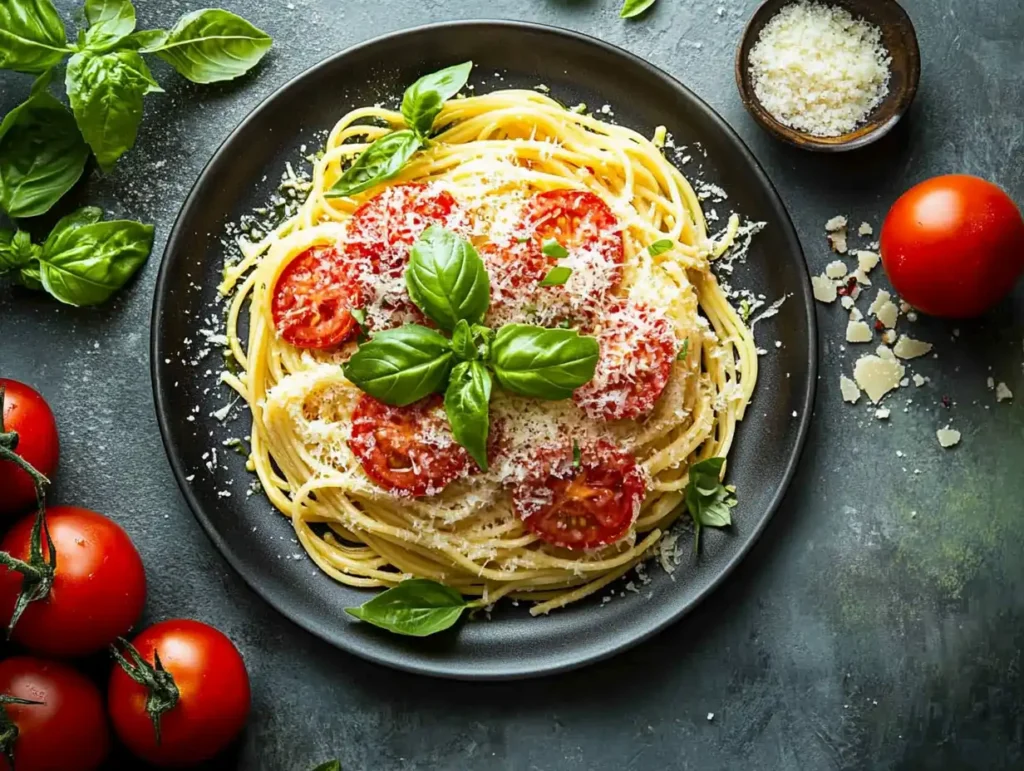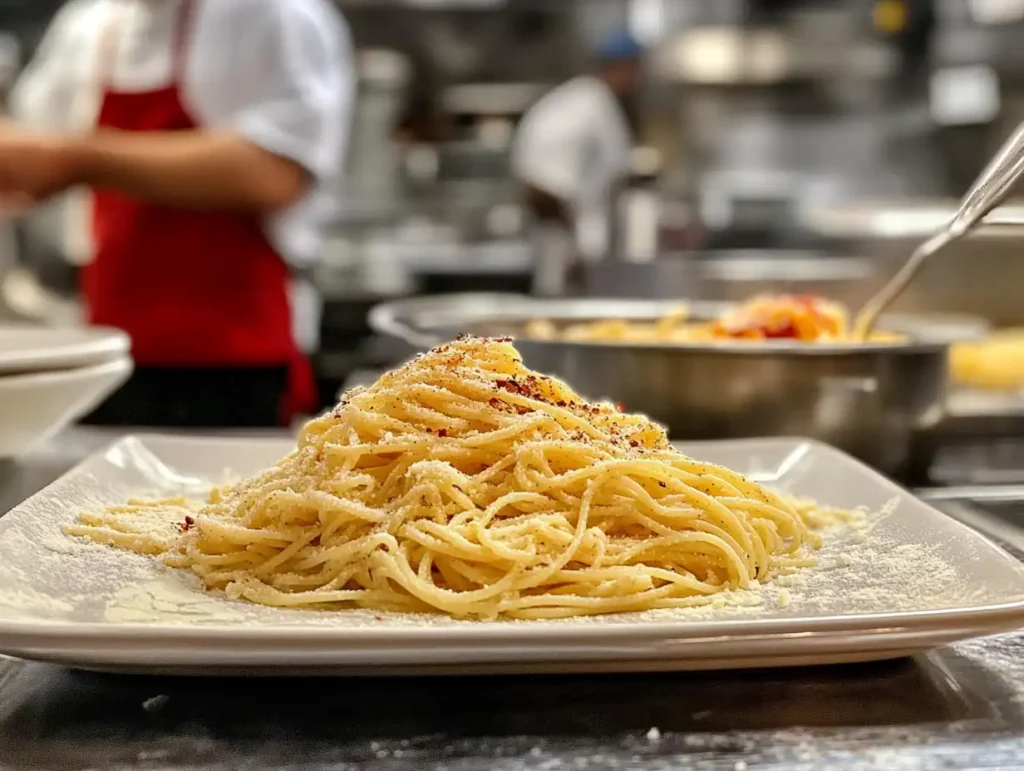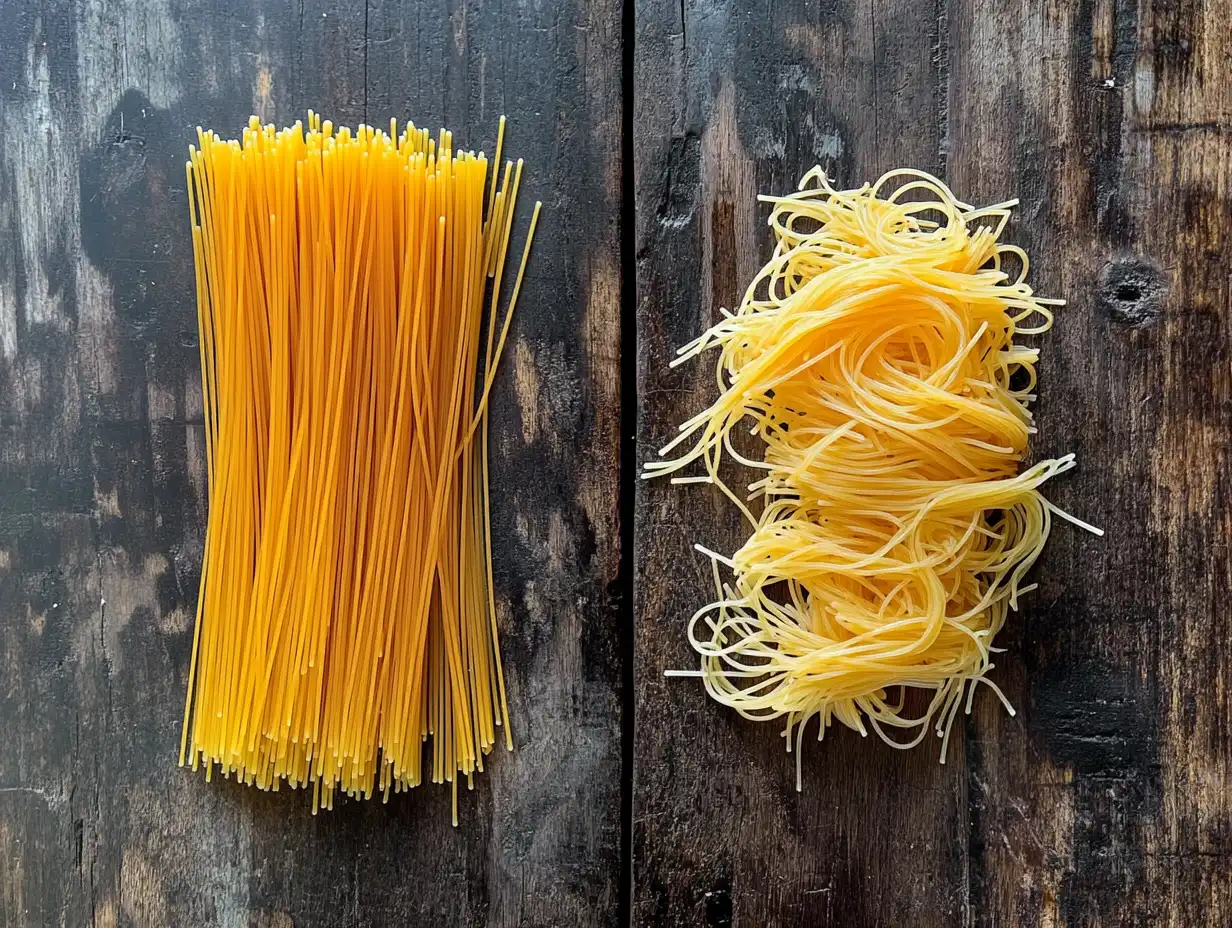Introduction
Pasta, an iconic symbol of Italian cuisine, comes in an astounding variety of shapes and sizes, each offering its own unique flavor and texture profiles. This brings us to the popular question: Is Capellini the same as Angel Hair pasta? Both types are among the thinnest and most delicate options in the pasta world. These two types of pasta are so similar that many people often use their names interchangeably. But are they truly the same, or do subtle differences set them apart?
Understanding the distinctions (or lack thereof) between Capellini and Angel Hair pasta is more than just a matter of semantics; it can influence your culinary choices, from selecting the perfect sauce to achieving ideal cooking times. This article dives deep into the question, “Is Capellini the same as Angel Hair pasta?” and provides insights for home cooks, food enthusiasts, and professional chefs alike.
What Is Capellini?
Capellini, meaning “little hairs” in Italian, is a type of pasta celebrated for its delicate, fine strands. It is among the thinnest pasta varieties available, measuring approximately 0.85 to 0.92 millimeters in diameter. Originating in northern Italy, Capellini’s versatility makes it a popular choice for light, elegant dishes.
Traditionally, Capellini is served with light sauces, such as garlic and olive oil or a simple marinara. Its thinness allows it to cook rapidly, usually in 2-4 minutes, making it an ideal option for quick meals. Despite its fragile structure, it holds its own against delicate toppings like fresh herbs or finely grated cheeses.
What Is Angel Hair Pasta?
Angel Hair pasta, also known as “Capelli d’Angelo” in Italian, shares much in common with Capellini, including its delicate appearance and rapid cooking time. Its diameter ranges slightly wider than Capellini, typically around 0.9 to 1.0 millimeters. Angel Hair’s ethereal name reflects its light, almost whimsical quality, which complements its culinary applications.
This pasta is a staple in many Italian-American households and restaurants, often paired with creamy or buttery sauces. Unlike Capellini, Angel Hair is more commonly associated with dishes like seafood pasta or those requiring a more pronounced texture. Despite these subtle differences, Angel Hair remains a top choice for recipes requiring finesse and simplicity.
Historical Background
Thin pasta varieties like Capellini and Angel Hair have deep roots in Italian culinary traditions. Historically, pasta makers in Italy sought to create diverse shapes and sizes to complement specific sauces and dishes. Capellini emerged as a northern Italian favorite, especially in regions like Piedmont and Lombardy, where light sauces and soups are prominent.
Angel Hair, on the other hand, gained more popularity internationally. Its poetic name, “Capelli d’Angelo,” was embraced in English-speaking countries, elevating its appeal. Though both pastas share a common origin, regional adaptations and marketing have played a significant role in how they’re perceived today.
Key Similarities
When wondering, Is Capellini the same as Angel Hair pasta? it’s easy to see why they’re often confused due to their striking similarities. Both belong to the thin pasta category and are ideal for light and delicate dishes. Here are their shared traits:
- Shape and Size
- Both pastas are long, thin strands, closely resembling each other in appearance. While Capellini is slightly thinner (0.85-0.92 mm), the difference is often imperceptible to the casual diner.
- Cooking Time
- With their slender form, both Capellini and Angel Hair cook extremely quickly, usually within 2-4 minutes. Overcooking can cause them to lose their texture, making timing crucial.
- Culinary Applications
- Both types shine in dishes that require finesse, such as light oil-based sauces, broths, or seafood accompaniments. They’re also commonly used in cold pasta salads or as a delicate base for flavorful toppings.
- Versatility
- Their neutral flavor allows them to blend seamlessly with various cuisines, from classic Italian recipes to modern fusion dishes.
Major Differences
While Capellini and Angel Hair pasta appear almost identical, subtle differences set them apart:
- Thickness
- Capellini is slightly thinner than Angel Hair, though the difference is minimal. Capellini’s thinner strands lend themselves better to soups and lighter toppings.
- Texture
- Angel Hair pasta has a slightly more robust texture, making it suitable for heavier sauces like Alfredo or creamy seafood dishes.
- Cultural Recognition
- Capellini is primarily recognized in traditional Italian cuisine, while Angel Hair has gained widespread popularity in global markets, especially in North America.
- Cooking Characteristics
- Angel Hair is slightly more forgiving during cooking due to its marginally thicker strands, whereas Capellini requires precise timing to avoid overcooking.
Cooking Techniques
Perfecting dishes with either Capellini or Angel Hair requires attention to detail. Here are some tips for cooking them:
- Boiling Water
- Use plenty of salted water to prevent the delicate strands from sticking together.
- Gentle Stirring
- Stir immediately after adding the pasta to the boiling water to separate the strands without breaking them.
- Watch the Clock
- Both pastas cook rapidly. Taste-test frequently to ensure an al dente texture, and remove them promptly once cooked.
- Sauce Pairing in Pan
- To prevent clumping, toss the pasta with the sauce immediately after draining. Reserve a small amount of pasta water to adjust the consistency of the dish.
Pairing with Sauces
The delicate nature of Capellini and Angel Hair pasta makes them ideal for lighter, well-balanced sauces. However, subtle differences in their textures and thicknesses influence their compatibility with specific sauces:

- Capellini
- Best paired with light, oil-based sauces such as garlic and olive oil or aglio e olio.
- Works well in broth-based dishes, where its thinness absorbs flavors without overwhelming the dish.
- Ideal for vegetable-based sauces or fresh tomato blends like pomodoro.
- Angel Hair Pasta
- Its slightly thicker texture makes it suitable for creamier sauces, such as Alfredo or carbonara.
- Frequently paired with seafood sauces, where it complements the rich, briny flavors of shrimp, clams, or scallops.
- Holds up better under buttery sauces, allowing for a more luxurious mouthfeel.
Both pastas shine when paired with simple ingredients that let their delicate texture take center stage. Avoid using overly chunky or heavy sauces that might overwhelm the strands.
Regional Preferences
Different regions favor Capellini or Angel Hair pasta based on local culinary traditions and global influences:

- Italy
- In Italy, Capellini remains a classic choice in traditional recipes, especially in the north, where lighter dishes are popular.
- Angel Hair is less commonly used in authentic Italian cooking, as Capellini fulfills a similar role.
- North America
- Angel Hair pasta enjoys widespread popularity in the United States, where it’s featured in Italian-American cuisine. It’s often sold under its English name, making it more accessible to consumers.
- Asia and Fusion Cuisine
- Both pastas are increasingly used in Asian-inspired dishes, such as stir-fries or cold noodle salads, thanks to their quick cooking times and neutral flavor profile.
- Other Regions
- In Mediterranean countries outside Italy, both types are used interchangeably in dishes that celebrate fresh, local ingredients, such as olive oil, herbs, and seafood.
Nutritional Comparison
Capellini and Angel Hair pasta are nutritionally similar, with only minor differences in calorie and macronutrient content. Here’s a breakdown (per 100 grams of dry pasta):
| Nutrient | Capellini | Angel Hair Pasta |
|---|---|---|
| Calories | ~350 kcal | ~360 kcal |
| Carbohydrates | ~70g | ~71g |
| Protein | ~12g | ~13g |
| Fat | ~1.5g | ~1.7g |
Both pastas are low in fat and rich in carbohydrates, making them a good energy source. The minor differences in nutritional values are negligible, and they can be substituted for each other without significant dietary impact.
Common Myths
- “They Are Completely Identical”
- While Capellini and Angel Hair pasta are similar, their differences in thickness and texture influence their cooking properties and culinary applications.
- “One Can Always Replace the Other”
- Though they can often be substituted, certain dishes may benefit from one over the other, depending on the sauce or preparation method.
- “Capellini Is Harder to Find”
- Both are widely available, though Angel Hair may be more recognizable in international markets due to its English name.
- “Angel Hair Is Americanized”
- Angel Hair has Italian origins like Capellini but gained prominence in global cuisines through its poetic branding.
Culinary Tips
Cooking with Capellini or Angel Hair pasta can be a rewarding experience if you follow these expert tips:
- Mind the Portions
- Due to their delicate structure, these pastas expand less than thicker varieties. Use about 75-100 grams of dry pasta per person for a balanced serving.
- Use Fresh Ingredients
- These pastas pair best with high-quality, fresh ingredients like extra virgin olive oil, ripe tomatoes, or freshly grated Parmesan.
- Don’t Skip the Pasta Water
- Reserve a small cup of pasta water before draining. The starchy water helps emulsify sauces, creating a silky texture.
- Avoid Overcrowding the Pot
- Use a large pot of water to allow the pasta to move freely while cooking, ensuring even doneness.
- Experiment with Herbs
- Fresh basil, parsley, or thyme can elevate simple recipes, adding a burst of flavor without overpowering the pasta.
Frequently Asked Questions
1. Can Capellini and Angel Hair pasta be used interchangeably?
Yes, they can often be used interchangeably, but subtle differences in thickness might make one more suitable than the other for specific dishes.
2. Which is better for creamy sauces?
Angel Hair is slightly better for creamy sauces due to its marginally thicker strands, which hold up better under heavier toppings.
3. How do I prevent these pastas from clumping together?
To prevent clumping, stir the pasta immediately after adding it to boiling water and toss it with sauce promptly after draining.
4. Are there gluten-free versions of Capellini and Angel Hair?
Yes, many brands offer gluten-free options made from rice, corn, or other alternatives to wheat.
5. What’s the best way to reheat dishes made with these pastas?
Reheat gently in a pan with a small amount of sauce or water to restore moisture and avoid overcooking.
6. Can these pastas be used in cold dishes?
Absolutely! Both Capellini and Angel Hair work wonderfully in cold pasta salads or chilled noodle recipes.
Related Reads on Capellini and Angel Hair Pasta
Related Reads on Capellini and Angel Hair Pasta
To enrich your readers’ understanding of Capellini and its similarities to Angel Hair Pasta, consider exploring these related topics:
- Get inspired with Capellini Pasta: The Ultimate Guide to Cooking and Enjoying This Delicate Pasta for cooking tips and delicious recipes.
- Discover the nuances of What is Capellini D’Angelo Pasta Called? and its culinary background.
- Learn the essentials of How Long to Cook Capellini for achieving perfectly cooked pasta every time.
Conclusion
Capellini and Angel Hair pasta are culinary marvels that bring elegance and simplicity to a wide range of dishes. While their similarities make them nearly interchangeable, their subtle differences in thickness and texture offer unique possibilities for various recipes. Whether you prefer the delicate finesse of Capellini or the slightly sturdier texture of Angel Hair, both pastas are versatile, quick to prepare, and universally appealing.
Next time you’re faced with the choice between the two, let the sauce, dish, or occasion guide your decision—and enjoy the delightful flavors they bring to your table.
